Next to the S95C, Samsung introduces a more affordable S90C television. It also features a QD-Oled Ultra HD panel at 144 Hz but lacks the remote box of its big brother. The Samsung TQ55S90C 2023 is a 138 cm (55″) QD-Oled TV with 4K Ultra HD resolution of 3840 x 2160 pixels. QD-Oled technology guarantees high contrast, realistic colors and deep black.
Please follow us on Twitter and Facebook
Presentation

In contrast to the S95C, the S90C does not offer a remote box. The maximum brightness is slightly lower, and we will examine all the details. The price difference is notable, with a suggested retail price of $1,497.99 for the TQ55S90C, compared to $1,997.99 for the 55S95C.
There is also a 65-inch version of the S90C priced at S$2,297.99 and a 77-inch model at $3,897.99.
All brightness and colorimetry measurements mentioned in this article were performed with a SpectraCal C6-HDR probe and CalMAN Ultimate software.
Technical Specifications and Features of Samsung TQ55S90C
| Specification | Details |
| Diagonal | 55 inches |
| Resolution (pixels) | 3840 x 2160 pixels |
| HD Compatibility (1080i/720p) | Yes / Yes |
| HD Ready Certification | Yes |
| Viewing Angles (H+V) | 178°/178° |
| Sound Power | 2 x 20 W |
| Dimensions (LxHxP) | 122.5 x 77.3 x 26.5 cm |
| Weight | 18.2 kg |
| Type | Oled |
| Backlight Type | Oled |
| 3D Compatibility | No |
| HDR Compatibility | HDR10, HDR10+, HLG |
| Panel Frequency | 120 Hz |
| Repairability Index | 7.7 /10 |
| HDMI Standard | HDMI 2.1 |
| Number of HDMI Inputs | 4 |
| HDMI 2.1 Compatibility | 4 |
Samsung TQ55S90C Image quality
If Samsung QD-Oled TVs now display under the name “Oled,” we still find the characteristic signature of the sub-pixels of QD-Oled technology with a red-green-blue triangle arrangement. It is worth noting that in LG Display’s Oled panels, the sub-pixels, arranged horizontally, number four with the addition of a white pixel.
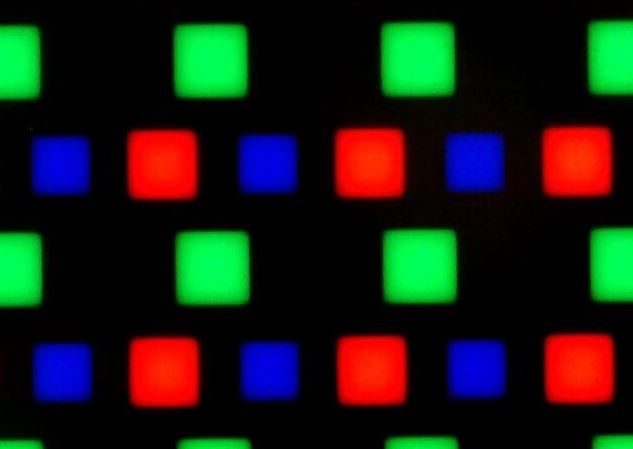
QD-Oled simply offers the best viewing angles on the market. We measured a brightness loss of only 4.5% at 45°. Oled is also good in this area, but the variation generally reaches 15 to 20%, while VA LCD panels are much more handicapped with a loss of 35 to 65% depending on the models.
Compare Photos
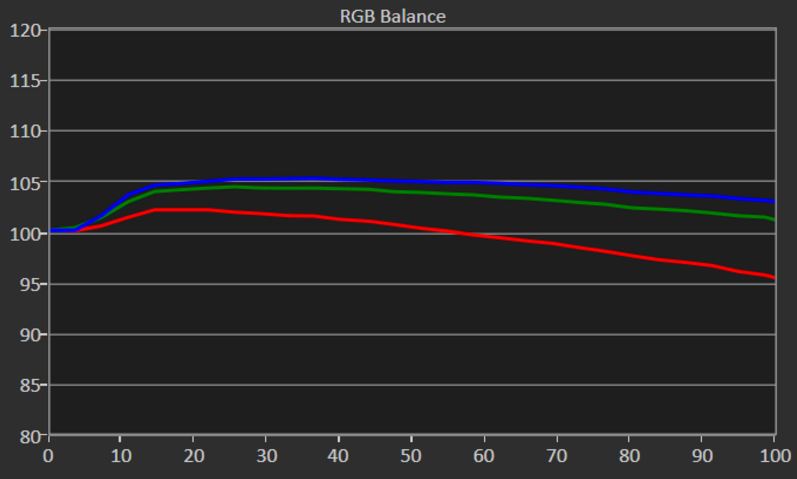
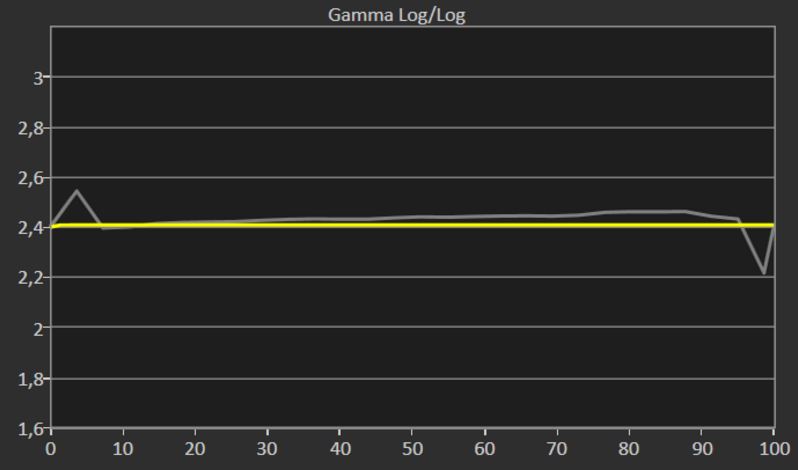
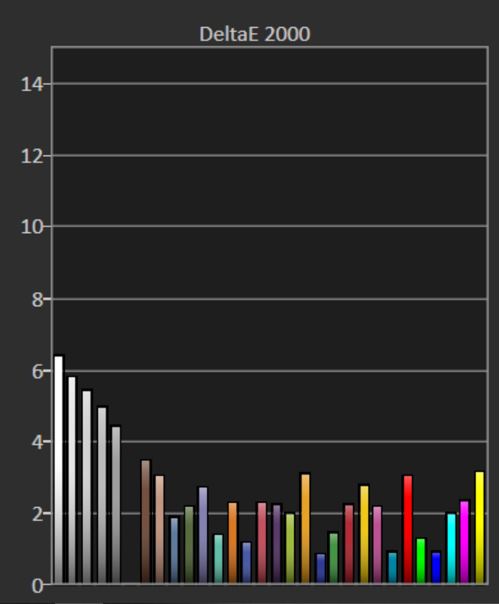
Samsung TVs do not offer 50 preset profiles, and it is always the Filmmaker mode that delivers the best image quality. On our review model, SDR color accuracy is precise with an average Delta E of 2.6, below the threshold of 3 beyond which the human eye can perceive deviations.
The average color temperature is often too cold in the South Korean models, and the S90C is no exception: we recorded an average of 7225 K, quite far from the 6500 K reference. In HDR, the result is also very good, as we will see in the next section. Thanks to the QD-Oled panel, the contrast is infinite with deep blacks, enhancing the viewing experience in dark scenes. A note on gamma: stable, it displays slightly overexposed grays with an average of 2.2 out of the box. Adjusting it to -1 in the menus brings it back to an average of 2.4, which is the norm for current TVs.
Finally, motion compensation, driven by the Neural Quantum Processor 4K, is remarkably effective, and the image proved to be sharp during our review of moving objects. However, the camcorder effect is quite intense, and we prefer to disable it. In any case, it is not activated when switching to Filmmaker mode. The upscaling of Full HD content is also successful, provided the settings are not pushed too far.
Read Also: Top 6 Best OLED TVs For Living Rooms And Lounges
HDR
The TQ55S90C is compatible with HLG, HDR10, and HDR 10+, but still does not support Dolby Vision. The HDR rendering is excellent, especially when activating tone mapping. The reference EOTF curve is perfectly followed up to about 60%, but then the curve is smoothed by the TV. This is a good thing as it helps avoid clipping (loss of details in very bright scenes).
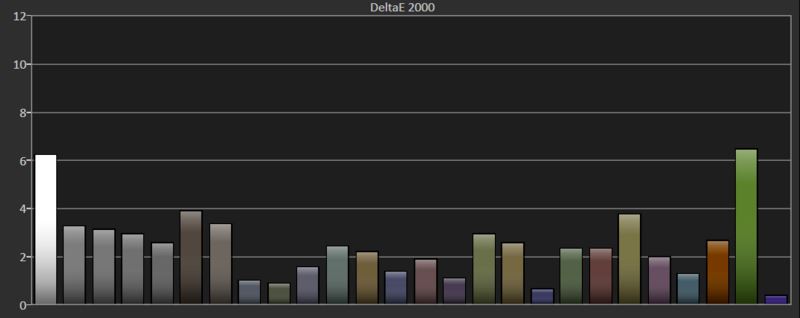
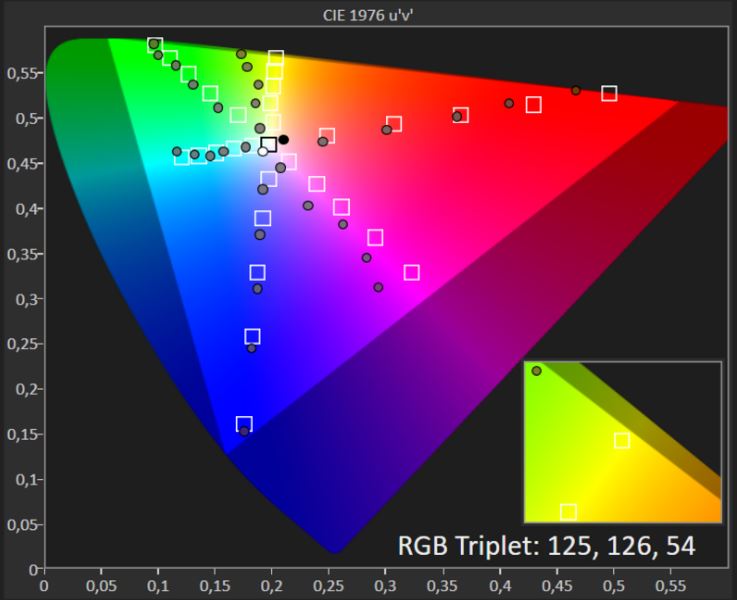
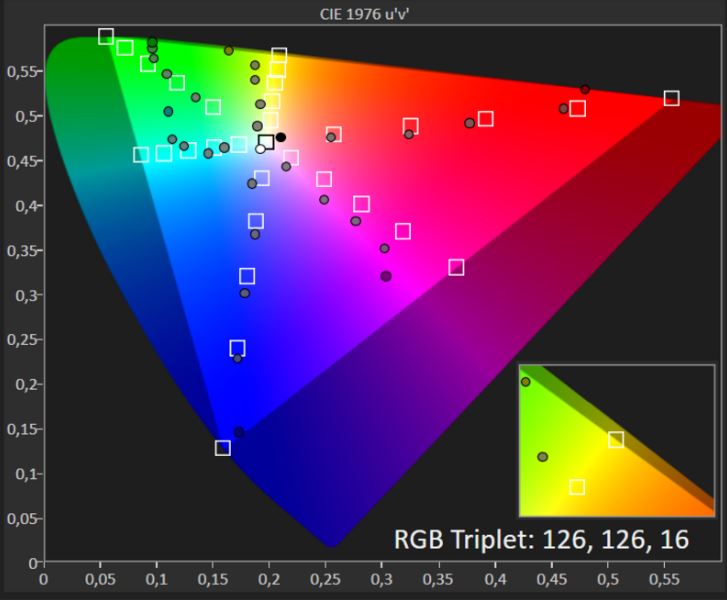
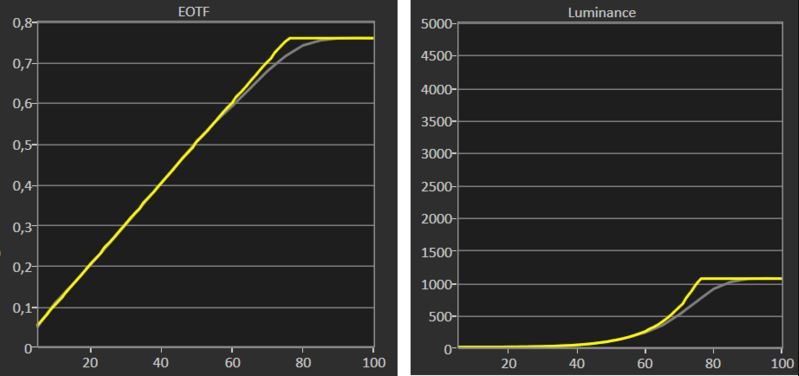
We measured a peak brightness of 1050 cd/m², a good result that surpasses the competitor LG C3 (900 cd/m²) but does not reach the level of the big brother S95C (1350 cd/m²), nor the TVs equipped with Meta Oled panel (LG G3, Panasonic MZ2000, and Philips OLED908) that exceed 1400 cd/m². In practice, HDR scenes will be reproduced a bit less effectively.
In terms of color accuracy, the TV performs better in HDR than in SDR. The delta E then rises to only 2.5. Colors can be considered accurate, with only a few shades of green exceeding the threshold of 3. The coverage of the DCI-P3 color space is 96%, which is excellent, and 71.9% for Rec. 2020. The latter is almost not used in cinemas, so it is of little importance.
Video Games
The input lag (display delay) is only 9.1 ms, simply one of the best results in our comparison, alongside the S95C and current LG models. Gamers can play without worrying about controller-to-screen delay. The QD-Oled benefits from a motion blur close to 0, and ghosting (phantom trails) behind moving objects is therefore absent. This is again a good thing when playing fast-paced titles.
The TV’s Game mode allows displaying a dedicated game bar by long-pressing the Play button. By default, this mode results in an image that is too cold, and we recommend selecting Warm2 for white balance and setting the profile color to Auto. This way, you achieve almost the same delta E values as in Filmmaker mode: 2.6 in SDR and 2.7 in HDR.
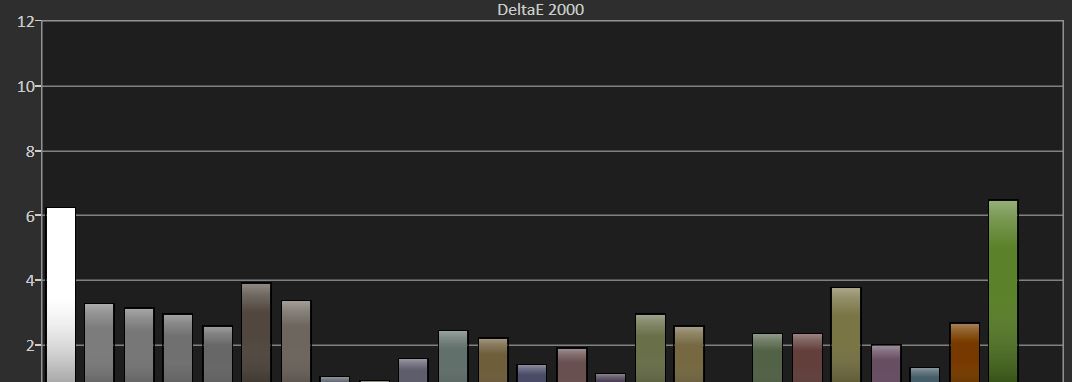
At the back of the TV, there are four HDMI 2.1 ports compatible with 4K 120 Hz, and the panel can even go up to 144 Hz, a refresh rate reserved for a handful of models on the market. However, only a PC can take advantage of this, as current gaming consoles are limited to 120 Hz. The ports support ALLM (Auto Low Latency Mode), automatically reducing display delay, and VRR (Variable Refresh Rate), preventing tearing and micro-stutters. This TV is also compatible with FreeSync Premium.
Clouding
Similar to Oled panels, QD-Oled panels do not suffer from clouding, as each pixel can be individually turned on or off. The uniformity of white is excellent, as we measured a variation of only 6.5%. It is, in any case, imperceptible to the naked eye.
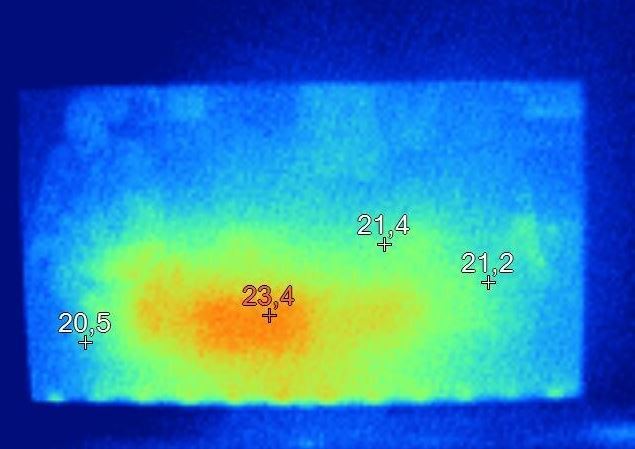
Reflectance
The S90C panel offers approximately the same reflectance as the other QD-Oled panels from the manufacturer. At 16.8%, it is one of the best in our comparison, with Samsung taking the top spot in this category. LG Display’s Meta Oled panels, which benefit from the Vanta Black filter, perform slightly less well with an average of about 18%, but the difference will be hardly noticeable. In practice, ambient light will almost not interfere with viewing.

Samsung TQ55S90C Ergonomics
As we mentioned earlier, the S90C is quite different from the S95C as it does not feature a separate box. The TV remains slim and weighs only 18.2 kg. For our 55-inch model, expect overall dimensions of 122 x 77 cm with a stand depth of 26.6 cm. The stand cannot pivot and is slightly tilted if the “decorative” metal plate is installed on top. If you want to install a soundbar in front, it’s not very practical, and it’s better to remove the plate.

The connectivity includes four HDMI ports (all four are 2.1, with one eARC), an Ethernet port, an optical digital audio output, two USB ports, a dual DVB-TCS2 tuner, as well as antenna and satellite connectors. Wi-Fi 5 is present, as well as Bluetooth 5.2 for connecting a headset or portable speaker. A plastic cover at the back conceals the ports and cables.

Of course, the Tizen operating system is in play. While it may experience occasional slowdowns, it remains effective on this TV. The wake-up time is quick at 2 seconds, while the “cold” start is one of the fastest on the market, timed at just 12 seconds.
The remote control is a bit disappointing for a relatively high-end TV, as it is entirely made of plastic and has non-backlit keys. The ergonomics remain good with a seamless integration with the Tizen OS and shortcuts to streaming apps like Netflix, Disney+, SamsungTV Plus, and Amazon Prime Video. A microphone is also present for voice commands on the TV or for searches. As a bonus, the battery is powered by a solar panel on the back—in case of an issue, it can be recharged via USB-C.

Read Also: Top 5 Cheap 4K TVs To Buy– Feature And Specifications Comparison
Audio
The Samsung S90C is Dolby Atmos compatible, but don’t expect to fully experience it with the built-in 40 W sound system. It falls short of the performance of the best models, such as the Philips OLED908, the MZ2000, or even the LG C3. Naturally, a dedicated soundbar will provide a better experience. Nevertheless, the TV still offers a satisfactory performance with decent bass reproduction, a feature not common in entry-level models.

Samsung TQ55S90C Power Consumption
The TV “burns” 80.2 W on our reference review pattern with brightness set to 150 cd/m², resulting in a relative consumption of 96.2 W/m². This is above the average in our comparison, which is typically around 80 W/m², considering that the latest OLED models consume less.
Repairability of Samsung TQ55S90C
The Samsung TQ55S90C displays a repairability index of 7.7, a good result driven by the long availability of parts and fast delivery times. However, the parts are relatively expensive compared to the price of a new TV, and disassembly is not straightforward.
Our Settings and Measurements
As is often the case, the Filmmaker mode offers the best image quality. We recommend adjusting the gamma to -1, choosing the Normal color profile, and maintaining a Warm2 white balance if you switch to game mode. In Filmmaker mode, the motion compensation engine is set to a minimum.
Detailed Results Obtained with These Settings:
| Parameter | Value |
| Real Contrast | Infinite |
| Black Level | 0 cd/m² |
| Gamma Quality | 5 / 5 |
| Delta E | 4.8 |
| Panel Homogeneity Deviation | 6.5% |
| Viewing Angles | 5 / 5 |
| Power Consumption | 80 W |
Pros and Cons of Samsung TQ55S90C
Pros
- Image Quality.
- Low Reflectance on the QD-Oled Panel.
- Infinite Contrast with QD-Oled.
- Four HDMI 2.1 Inputs (4K 120 Hz, ALLM, VRR).
- Responsive Panel for Gaming.
- Solar-Powered Remote.
Cons
- Tizen Interface Occasionally Slow.
- Above-Average Power Consumption.
- Lack of Dolby Vision Support.
- Non-Backlit Remote.
Conclusion
The Samsung TQ55S90C delivers a very good performance at a relatively affordable price compared to OLED competitors in the market. The image quality is notable, featuring infinite contrast and a panel equipped with an excellent anti-reflective filter. While the brightness may not be as impressive as the high-end S95C or TVs with a Meta OLED panel, it remains high overall. Additionally, the TV performs very well in video games. However, some criticisms can be directed at it, especially in terms of its ergonomics, which suffer from a few shortcomings.
Read Also:
LG Unveils 2024 OLED Smart TVs: 144 Hz Refresh Rate, AI Features, And More
